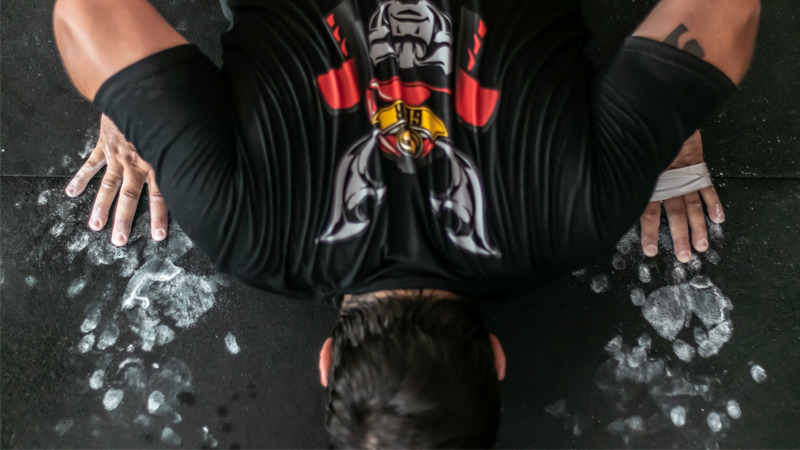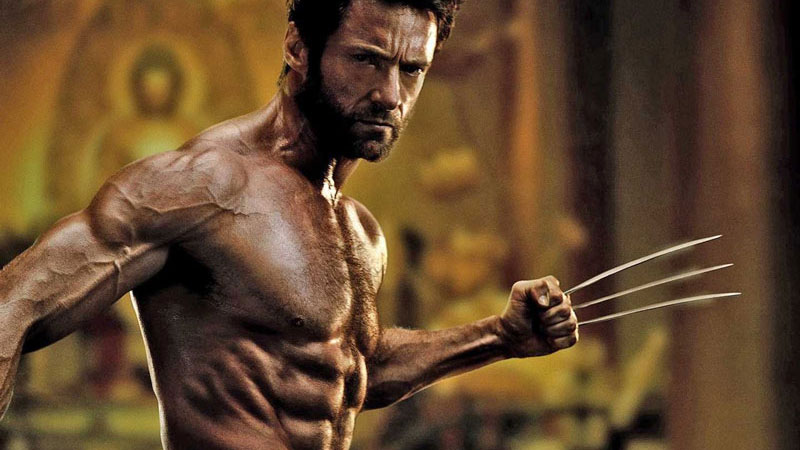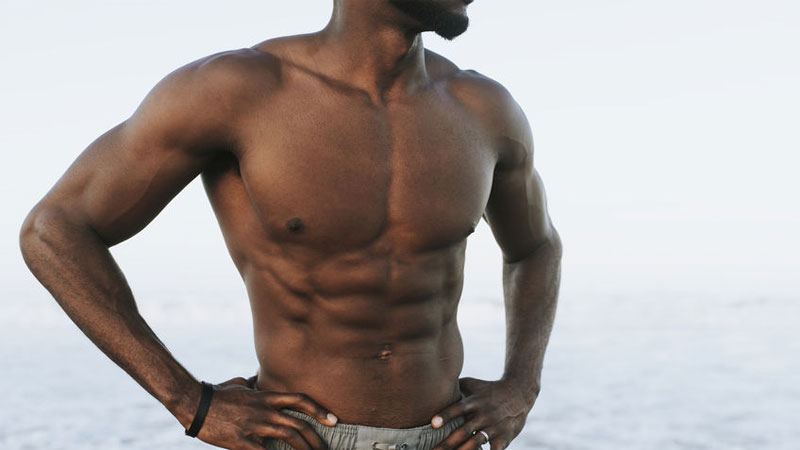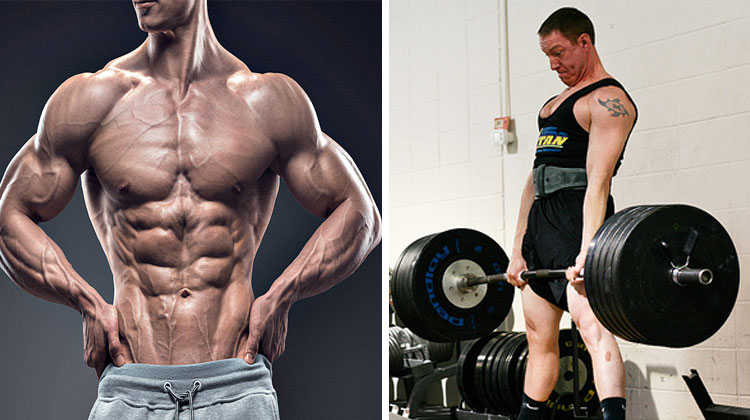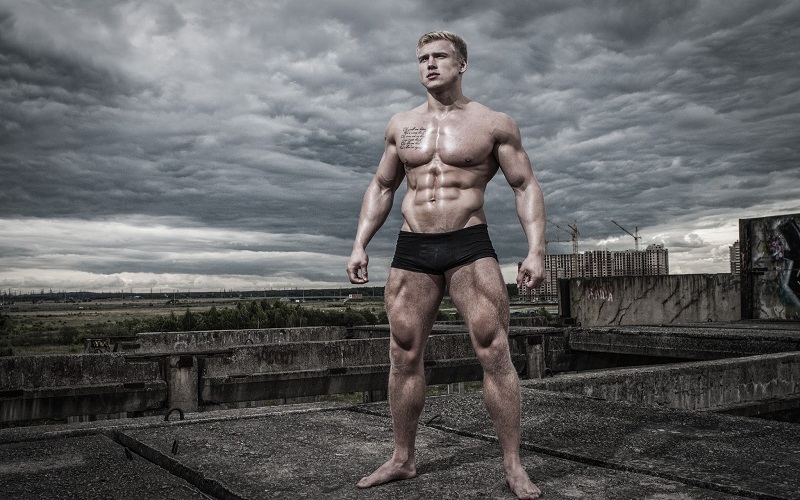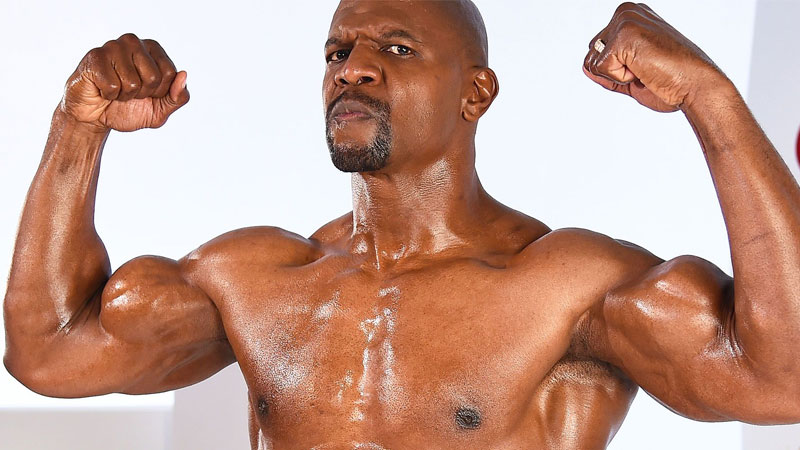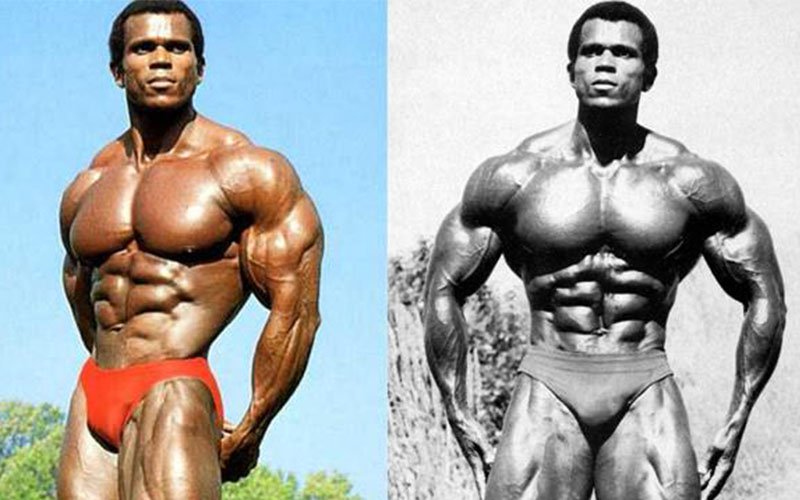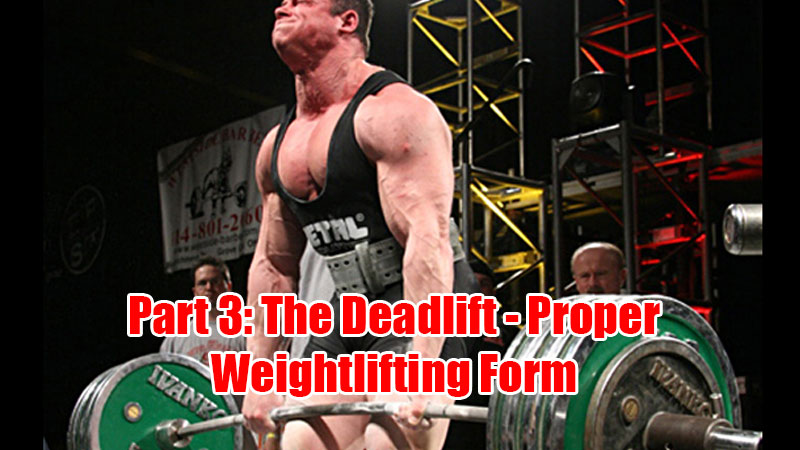
Proper weightlifting form is about relentlessly pursuing great technique – even when the bar starts to get real damn heavy.
The deadlift is the true test of physical and mental strength. Yeah, the squat might be the king of exercises, and your numbers on the bench might make the girls wet. But when it comes to old school, skin-tearing, bar-bending primal strength, the deadlift is the one.
There’s more to the deadlift than just gripping, ripping and hoping for the best. It’s about timing, precision, control and brute power.
In this guide, we’ll tell you how to guarantee a double body weight deadlift in no time at all.
And once you’ve nailed you’ll reach pro bro status and can wear your stringer vest, snapback and over-ear headphones with pride.
Oh, and if you haven’t already done so, check out our guides to squatting and benching with proper weightlifting form.
The Deadlift – Proper Weightlifting Technique
Don’t know about you but there’s something caveman-like about lifting heavy sh*t from the ground.
It’s like there’s a calling for any bro with an ounce of testosterone flowing through his veins to grip, rip and make the bar your bitch over and over again.
There’s an old saying – “if you don’t deadlift, you’re a pussy”.
It’s not really an old saying, we’ve just made it up. But it’s true.
Everyone has that one friend that always makes excuses on deadlift day. Whether it’s…
“Dude, my back’s sore”…
“Buddy, I trained legs yesterday”…
“Bro, I can’t deadlift today because the moon is in retrograde, my horoscope told me not to and my moonstone amulet is glowing green which is a bad sign”.
The bottom line is that all guys should deadlift. No excuses. No surrender.
The benefits of deadlifting
Chalking up big numbers for your deadlift gives you credibility among the bro community. It might even get you laid too if the gym hotties notice the loud thunk of your deadlift PR smashing the ground.
But there’re more reasons to deadlift than busting a PR… or a nut.
Here are some other important benefits to deadlifting:
- Jacked muscle mass – with so many different muscles involved in the deadlift, it provides a sky-high stimulus for developing slabs of good quality muscle mass.
- Improved power, performance and strength – the mechanics of the deadlift transfer to a number of athletic movement patterns. There’s a huge amount of evidence that says deadlifting boosts a whole kit bag of sports performance markers.
- The fat will melt off you – deadlifting ramp ups energy expenditure more than your average lift would, especially at maximal and explosive velocity.
- Increased testosterone, growth hormone, and other anabolic hormone production – research shows that even at moderate loads, the deadlift spikes muscle building hormones.
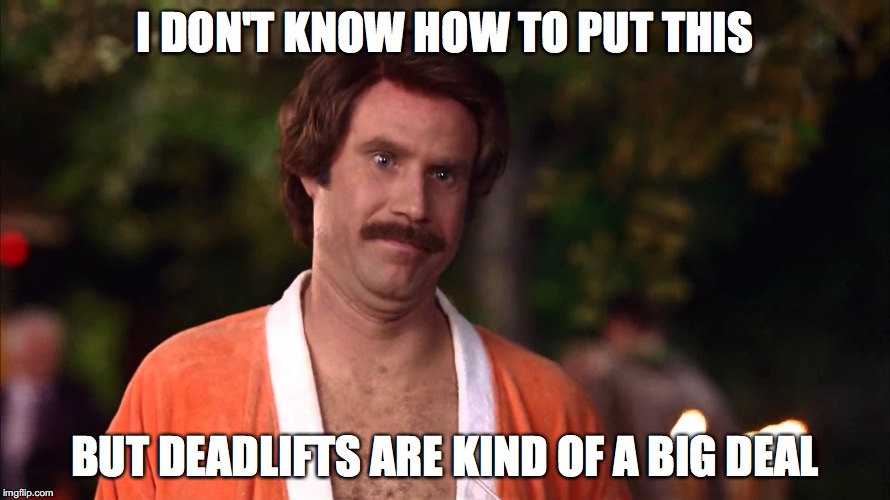
What muscles does the deadlift work?
All of them.
Done.
Seriously though bro, the deadlift works practically all of your 600 odd muscles.
It’s primarily a pull exercise that dominates posterior chain movement. So the prime movers involved will be your:
- Glutes
- Hamstrings
- Erector spinae (lower back)
- Traps
These muscles contribute the most to a solid, strong deadlift. But on top of that, you’ve got a load of other muscles that support the movement.
These include your arms and shoulders, quads, trunk muscles, and calves.
[infobox]Bro note: The deadlift involves practically all major muscle groups, but your individual biomechanics and type of deadlifting position can alter the exact muscle activation contribution.
[/infobox]Different types of deadlift
There might have been ‘one ring to rule them all’ in the Kingdom of small-ass hobbits. But in the world of strong dudes who like to lift, there isn’t one deadlift to rule the gym floor.
Here are just a few deadlift variations:
- Conventional
- Sumo
- Romanian
- Deficit
- Hack lift
- Snatch grip
- Hex/trap bar
- Dumbbell
For the purpose of this guide though we’re sticking to the master of them all… the conventional deadlift using a barbell.
Once you’ve nailed this version you can play around with the different variations.
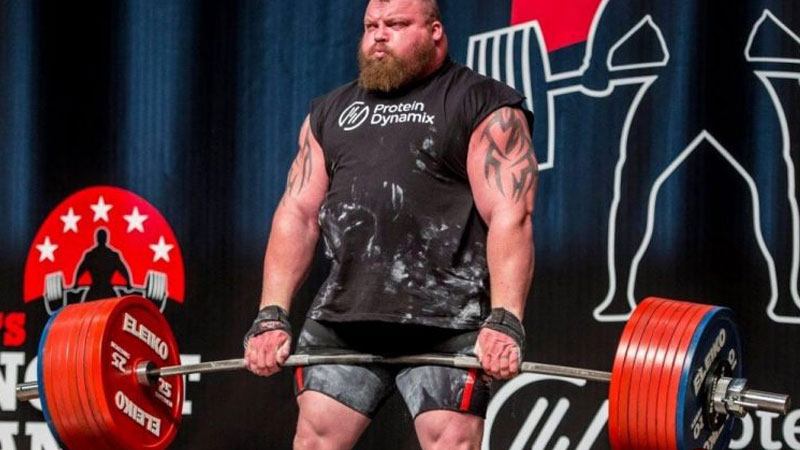
The Best Damn Guide to Deadlifting on the Internet
Proper weightlifting form is key to any great lift.
And now it’s time to start prepping for your first proper deadlift, technique comes first. So pull up a bar, grab some weight plate and smash your hands into the chalk bowl.
Because things are about to get heavy.
Preparing to deadlift – what equipment do you need?
It goes without saying; you’re going to need some equipment for the deadlift.
You’ll need a 7-foot Olympic barbell (these weigh 44 lb) and a range of weight plates. You might think it’s easier to go lighter on the deadlift for your first time – and it is – but bear in mind that lighter plates are often smaller in size. And this means you’ll have to go through a greater range of motion to crank out a rep, making the lift more difficult.
If you can, use weight plates that are around 17 inches in diameter. This sets the barbell high enough for you to get into position, pull at the bar and complete a solid lift.
Whether you use cast iron plates or rubber plates is up to you.
Set up the barbell up on a solid platform. These are able to withstand the weight of the bar without damage. They’re also sprung so there’s less chance they’ll smash the weight plates in half too.
Worst case, just find a hard-wearing floor.
[infobox]Bro Note: Get a bar, some plates and find a solid floor surface. It’s time to deadlift.
[/infobox]The set-up
If you get the set-up sorted you’re much more likely to achieve a fluid, strong deadlift. Skip the right position and rush your lift and it’ll be flatter than a supermodel tiddy.
First is the starting stance.
Most lifters go with a ‘stacked’ position with their ankles and knees directly under their hips. Others perform a couple of squat jumps to see which is the most powerful vertical force position, and then adopt that.
Don’t go too wide when lifting conventional as you’ll just lose force through the floor, and more than likely let your knees roll inward.
In terms of shin position, you’re wanting to be nice and close to the bar to reduce leverage and back strain. In other words – the further the bar is from your body, the heavier it’ll feel.
And the path of the bar should be up, not back. So it makes sense to set the bar as close to your body as you can, without it dragging up your shins (occasionally this’ll happen and leave you with legs that’re pretty beat up, but don’t worry about it if it does).
As you look at the bar, your first laces (the ones nearest your ankle) should be covered by the bar.
[infobox]Bro Note: The starting point of the bar should be around 3 inches or so from your shins. You can adapt it if you need to based on ankle flexibility and leg length.
[/infobox]Where should you grip the bar?
At this point, your feet are ‘set’ and you’re looking down at the bar, ready to teach it who’s boss. But before you do, let’s look at bar grip.
When gripping the bar, you want to go as narrow as you can get away with. Let the inside of your forearms pretty much rest against the outside of your legs.
If you go too wide your scapulae will have to work double time just to resist the load on the bar. You’re more likely to arch your back and miss your lift.
Next is the actual grip you adopt.
Some lifters use a double overhand and others use a mixed grip with one hand under and the other over. To an extent, it’s down to preference, but bear this in mind – it’s tough using a double-overhand with heavy ass loads.
The mixed grip is the most popular in competition as it stops the bar rolling away from you or out of your hands.
More advanced lifters often opt for a hook grip. This is a double-overhand position, but with fingers wrapped over your thumb, not under. It can be uncomfortable for a lot of lifters (especially the ones with small, feminine hands), but once you’re used to it you’ll be able to clamp practically any weight with ease.
[infobox]Bro Note: There are a few different ways you can grip the bar with proper weightlifting form. Use what works best for you.
[/infobox]Set-up checklist:
- Feet are roughly at hip-width apart.
- The bar is covering your first laces and your shins are around 2-3 inches from the barbell.
- Your hips are higher than your knees, and your shoulders are higher than your hips.
- You’ve got a trunk angle at around 45 degrees and your shoulders are set in front of the bar.
- Your knees are bent, but not excessively. Too deep and you’re practically squatting.
- Finally, your back is straight and not arched.
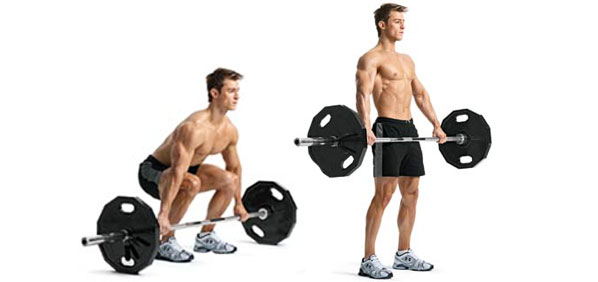
The lift – ripping the sh*t out of that bar
You’re set.
The stance is nailed and the grip is tighter than a pro hooker at a masturbation party. And above all, you’re feeling confident.
You should begin the lift by taking a deep breath in and then tensing your core. The increase in intra-abdominal pressure helps connect your lower body to your upper body without energy leakage.
Core strength is important when deadlifting so give your body every chance you can to keep things tight and productive.
Next, push your chest high. Imagine you were wanting to show off the logo on your jersey to the people in front of you. This’ll give you a good pulling angle, but also reduce lower back loading.
Don’t worry if it pulls your hips down a touch. This just helps to set you up for the lift.
Take the slack out of the bar by pulling it just slightly until you feel tension through the bar, and through your body.
Because you start the deadlift with a concentric action (unlike the bench press and squat which are preceded with an eccentric action), taking the slack from the bar helps to initiate muscle activation.
It also gives you chance just to mentally set yourself, rather than using a more ‘grip and rip’ approach.
When it comes to the drive phase, make sure your weight is set through the heels and mid-foot. If you push through the balls of your feet you’ll end up leaning into the lift which’ll result in you being off balance.
The drive phase has two distinct parts:
- The pull to mid-thigh
- Hip extension
When you begin to lift the bar from the floor you shouldn’t change back angle at all. If you let your hips shoot up first you’ll end up rounding your back out. And if your shoulders come up first you’ll lose the lift and rely too much on a squat-style movement.
Your elbows should be locked throughout the movement.
Using your lats to ‘pull’ the bar into your body helps to correct your center of mass and keep your upper body tight throughout the lift. It’ll also help to reduce how hard your spine has to work to control the bar path.
The initial movement is slower and much more controlled. Movement comes from the knees while keeping the back and hips tight. If you do this correctly, the bar will naturally begin to move upwards and your knees will move out of the way of the bar.
As the bar moves towards your knees, begin to lift your chest.
By moving into hip extension you take the load off the quads and lower back and switch it to your hamstrings and glutes.
Think about pushing your hips forward and your shoulders back.
Once the bar moves past mid-shin, the final part of the lift comes from driving your hips towards the bar. This is the ‘snappy’ part of the movement and should be powerful and explosive.
The finishing position is you at the top, with arms locked, hips and knees fully extended and stood upright.
At this point you can rejoice as one cool ass muthaf*cka. If this was a competition you’d get all white lights and chalk this one down as a good lift.
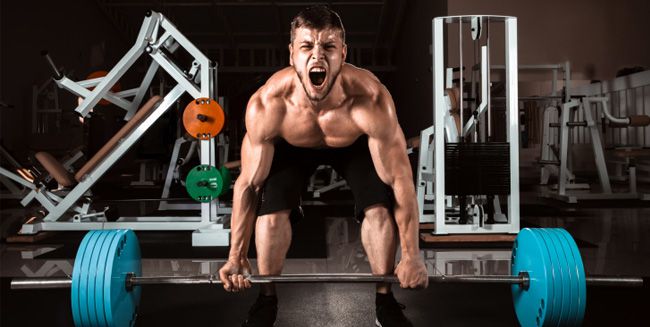
Avoid overextending your hips as this’ll put unnecessary stress on your lower back.
[infobox]Bro Note: Good deadlifts involve strength and power, but also balance, control and synergy between muscle groups.
[/infobox]The descent
At this point, you’ve got a decision to make. You either slam the bar down to the floor in victory. Or you lower it in a controlled manner.
In commercial gyms, you’ll probably end up with the noise police on your ass if you drop the bar. And if the plates aren’t rubber you might well break them.
The bonus of lowering the bar under control is that you’re adding in some muscle building eccentric work. And it’s much easier to get set for the next rep too rather than having to run after a bouncing bar and get it positioned for the next rep.
To lower the bar safely, just reverse what you did during the lifting phase. Move into hip flexion until the bar drops below your knees, and then use knee flexion to guide it to the floor.
You don’t need to over-egg the pudding though – 2-3 seconds is long enough to control the descent without getting too fatigued.
[infobox]Bro Note: Control the bar on the way down and get a hell of a muscle building stimulus.
[/infobox]Summary – Proper Weightlifting Form: The Deadlift
As a whole-body, highly skilled lift, the deadlift is all about technique.
Get it wrong and you’ll end up in a world of hurt. But if you get it right you’ll ramp up your lifting ability and hit the dizzying heights of new PRs.
Always put proper weightlifting form first.
Where do you go from here?
The gym, bro, obviously. Go and try and what you’ve learned.
Either that or check out these other articles:
- Part 1: The Bench Press – Proper Weightlifting Form
- Part 2: The Squat – Proper Weightlifting Form
